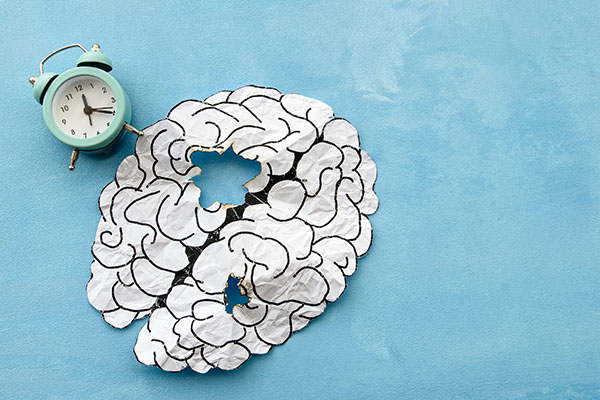Yoga and autism: A science-backed look at how a simple practice is transforming behavior and movement in children with ASD
04/12/2025 / By Olivia Cook

- An eight-week yoga program led to reduced behavioral challenges and improved motor coordination in children with autism, with benefits lasting beyond the intervention period.
- Children showed decreased irritability and social withdrawal, likely due to yoga’s calming, structured environment.
- Yoga enhanced balance, ball-handling skills and posture, helping children feel more confident in physical activities.
- Yoga combines breath work, mindfulness, movement and sensory integration – all of which support body awareness, emotional regulation and social engagement.
- Simple, visual and child-friendly yoga practices can be integrated into daily routines at home, school or therapy settings to support well-being.
A growing body of research suggests that the ancient practice of yoga may offer powerful benefits for children with autism spectrum disorder (ASD). In a recent study published in the Behavioral Sciences journal in February 2024, researchers found that yoga not only helped reduce challenging behaviors in children with autism but also improved their motor coordination.
This promising evidence shows that yoga – when thoughtfully adapted – can become more than a wellness trend. It can be a meaningful evidence-based intervention that supports emotional regulation, physical development and well-being for children on the spectrum. (Related: Kids reap yoga benefits too.)
Navigating behavior and coordination in autism
Children with ASD often face a unique set of challenges. Difficulties with communication, motor coordination, sensory processing and social interaction can lead to frustration and emotional overwhelm. In many cases, these challenges contribute to behaviors such as irritability, restlessness or withdrawal, among others – making day-to-day life more difficult for both children and their parents, siblings, caregivers and/or teachers.
Finding tools that support multiple areas of need – behavioral, emotional and physical – can be a game-changer. This is when yoga enters the picture.
Exploring yoga as an intervention
To explore yoga’s potential, researchers conducted a randomized controlled trial (RCT) involving 17 children diagnosed with autism. The children were split into two groups: one group received regular yoga sessions for eight weeks while the other continued with their usual routines.
The yoga group attended three sessions per week, each lasting 45 to 50 minutes. The sessions were carefully tailored to the needs of children with autism, incorporating both breathing exercises and physical poses – ranging from gentle warm-ups, like the cat pose and mountain pose, to more dynamic movements like the downward dog and tree pose.
Researchers assessed the children’s behaviors and motor skills before the program began, midway through and immediately after the program and again, four weeks later, to evaluate lasting effects.
- Behavioral improvements: Children in the yoga group showed significant reductions in irritability, restlessness and social withdrawal compared to the control group. Even a month after the program ended, many of those improvements remained – suggesting that yoga’s impact may extend beyond the mat.
- Better motor coordination: Children who practiced yoga also demonstrated better balance and coordination. These improvements were especially noticeable in ball skills (like catching and throwing) and the ability to maintain physical stability during movement and stillness.
Why yoga works
The positive effects of yoga on children with autism likely come from its unique coordination of breath work, mindfulness, movement and routine – all of which support key developmental areas:
- Emotional awareness: Guided breathing and visualization help children identify, express and manage their emotions in constructive ways.
- Motor skill development: Repeated practice of poses improves balance, coordination and strength – key areas that are often underdeveloped in children with ASD.
- Self-regulation: Breathing exercises and structured movements help calm the nervous system, reducing anxiety and helping children respond more calmly to everyday stressors.
- Sensory integration: Yoga offers controlled sensory input (balance, movement, touch) that help children better process sensory information from their environment.
- Social and communication skills: Group yoga sessions provide natural opportunities for imitation, shared focus and turn-taking – all of which encourage social engagement.
Tips for bringing yoga into everyday routines
Yoga’s beauty lies in its accessibility. It does not require clinical environments, complex instructions or expensive equipment. With thoughtful adaptation, it can become part of a child’s routine at home, in the classroom or in a therapy setting.
Here are a few practical suggestions for introducing yoga to children with autism:
- Start with simple poses that allow the child to feel successful. Build gradually.
- Use pose cards or visuals to help children follow along and feel more in control.
- Make it fun by incorporating animal-themed poses, calming music or storytelling.
- Encourage short yoga breaks throughout the day to reset attention and mood.
- Create a quiet yoga corner at home where your child or children can go to breathe, stretch or unwind.
- Importantly, yoga sessions can be adapted to each child’s preferences. Even seated poses or brief breathing exercises can offer benefits.
- Model calm behavior during the session. Yoga can be calming for adults, too.
Yoga as a supportive tool, not a cure
While this study highlights promising results, researchers are quick to note that yoga is not a cure for autism but a supportive tool that can be integrated alongside other therapies. Ongoing studies will continue to explore its long-term effects, how it compares with other interventions and which children benefit most.
What this study does show is that yoga can help children with autism feel calmer, move more confidently and connect with others more easily – giving them tools to navigate in a world that often feels overwhelming.
Yoga may be an ancient practice but its modern-day applications for children with autism are beginning to unfold. With its focus on breath, mindfulness and movement, yoga offers a simple yet powerful way to support behavior, coordination and emotional well-being.
Watch this video about “teaching yoga to children with autism.”
This video is from the Daily Videos channel on Brighteon.com.
More related stories:
Yoga as complementary medicine: How yoga can support your mental and physical health.
Yoga improves mood, reduces anxiety and depression.
Desk yoga: 10 Yoga poses you can do at work.
Sources include:
Submit a correction >>
Tagged Under:
ASD, autism, behavior, brain function, motor coordination, natural health, problem behavior, routine, sensory integration, supportive tool, therapy, Yoga, yoga intervention
This article may contain statements that reflect the opinion of the author
RECENT NEWS & ARTICLES
COPYRIGHT © 2017 NATURAL MEDICINE NEWS




















